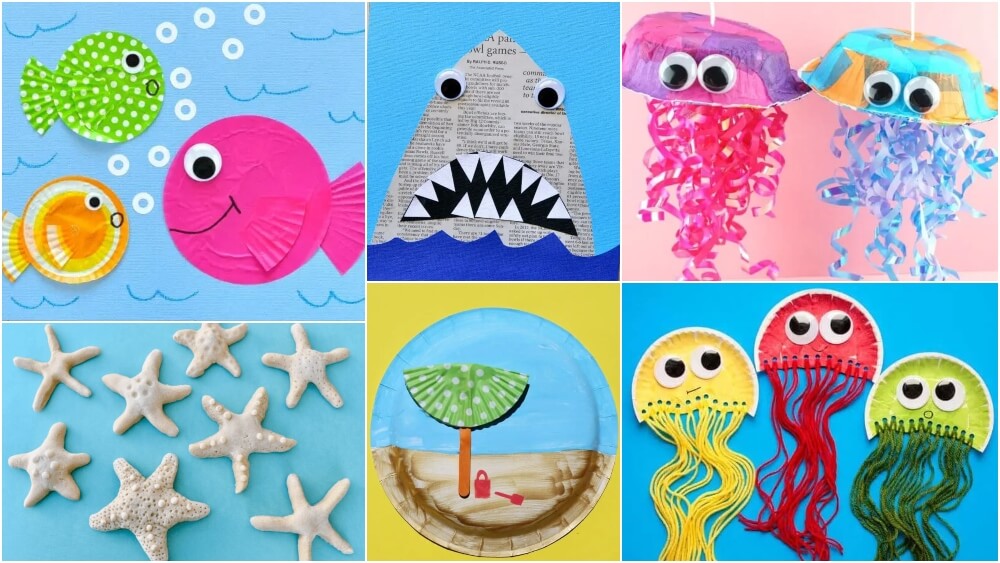Synthetic Fibres and Plastics

The clothes that we wear everyday are made from fabrics that are derived from either natural or synthetic fibres. Some common examples of natural fibres include cotton, silk, jute, etc. and are derived from natural sources such as plants and animals. Synthetic fibres on the other hand are not derived from natural sources; they are man-made or synthetic. All synthetic fibres are in fact made from raw materials of petroleum origin known as petrochemicals.
Contents
Polymers:
Both synthetic and natural fibres are made from large units called polymers. A polymer is made up of several smaller, repeating units.
The word polymer is derived from the Greek word ‘poly’ meaning many and ‘mer’ meaning part or unit.
- Take a handful of paperclips and join one clip to the next.
- You will obtain a chain of paperclips.
- This chain is essentially a polymer – it is made up of multiples of a single unit i.e, a single paperclip.
Cotton is an example of a natural fibre made up of a polymer called cellulose. Cellulose is made up of repeating units of glucose.
Types of Synthetic Fibres:
Rayon:
- Rayon is also known as artificial silk due to its similarity in texture to silk.
- Since natural silk is very costly, attempts were made to obtain it artificially and that is how rayon was produced.
- Rayon is similar in texture to silk and is cheaper and more affordable.
- It is obtained by chemical treatment of wood pulp; although it is derived from a natural source it is a man-made fibre.
- Rayon can be easily woven like silk fibres; it can be dyed in a wide variety of colours.
- Rayon is mixed with cotton to make bedsheets or with wool to make carpets.
Nylon:
- Nylon is the first fully synthetic fibre.
- It is made from coal, water and air; not plants or animals.
- Nylon fibre is strong, elastic and light. It is lustrous and easy to wash making it very popular for making clothes.
- It is commonly used for making socks, curtains, sleeping bags, tents, toothbrushes, car seat belts.
- Nylon is light yet very strong and durable and hence it is used for making parachutes and ropes used for rock climbing.
- A nylon thread is actually stronger than a steel wire.
Polyester:
- Polyester is the polymer of a chemical compound called ester; polyester is a category of polymers.
- Fabric made from this material does not wrinkle easily and so it is preferred for making dress materials, shirts and other clothing items.
- Terylene is a polyester that can be drawn into very fine fibres and woven into weightless fabrics that are crease resistant.
- Fabrics such as polycot, polywool, terrycot, etc. are nothing but mixtures of two different fabrics – polycot is a mixture of polyester and cotton, terrycot is a mixture of terylene and cotton, polywool is a mixture of polyester and wool.
Polyethylene terephthalate(PET) which is commonly used for making bottles, containers, films, wires, etc. is actually a polyester.
Acrylic:
- It is a synthetic fibre commonly used for making sweaters, shawls and blankets.
- These materials are far cheaper than actual wool and are also very durable making them a good alternative.
- They can be obtained in a variety of different colours.
Be Careful in Synthetic Clothes!
- A major difference between synthetic and natural fibre is how they burn.
- Natural fibres burn when set on fire whereas synthetic fibres actually melt on heating.
- As a result the synthetic material would melt on your body and cause severe damage.
- That is why it is advised to never wear synthetic fabrics when working in a lab or kitchen or around any open fire.
Benefits of Synthetic Fibres:
- Synthetic fibres are cheaper.
- They are durable and readily available.
- Most synthetic fibre fabrics do not crease easily.
- Synthetic fabrics dry a lot faster than natural fabrics.
Activity: Take a one square metre piece of synthetic fabric and one square metre piece of cotton fabric. Drench the both of them in water and hang them out to dry.
- Do both the materials absorb the same amount of water?
- How long does it take to dry? Does one fabric dry quicker than the other?
Plastics:
Plastics are a part of our day to day life – most of the items that we use on a daily basis are in fact made of plastic.
- Plastics are also polymers i.e., they are made up of small, repeating units.
- The repeating units may be linked to each other either in a linear manner or they may be cross-linked.
You must have noticed that certain plastic materials such as pipes can be easily bent whereas plastic hair clips break on bending. Therefore, there are two types of plastics:
- Thermoplastics – Plastics that can be bent easily and are deformed on heating. For example, polythene and PVC, which are used for making pipes, toys, containers, etc.
- Thermosetting Plastics – These plastics, once moulded cannot be softened or reshaped by heating. These materials break on bending. Examples include melamine and bakelite. Bakelite is a poor conductor of heat and electricity and so it is useful for making electrical switches and handles of kitchen utensils. Melamine is far more heat resistant than most plastics and is used for making tiles and kitchenware. In fact, a coating of melamine is present on the uniform of firefighters to make it fire-resistant.
Uses Of Plastics:
- Plastics are non-reactive with air and water. As a result, they do not corrode and can be used for the long term storage of various items including chemicals.
- Plastic is light, strong and durable. Plastics can be moulded into any shape and are cheaper than metal so they are useful for making a variety of items such as containers, mugs, buckets, and several other household articles.
- Plastic is a bad conductor of heat and electricity. It is very useful for coating wires and for making handles of screwdrivers as well as kitchen utensils.
- Plastics are extensively used in the healthcare industry for packaging tablets, making syringes, threads for stitches, gloves, etc.
- Special microwave safe plastics are used for making utensils. These utensils can be used for heating food in the microwave as the plastic doesn’t melt while the food is getting heated.
Teflon is a special type of plastic used for coating non-stick cookware as water and oil do not stick to teflon.
Effect of Plastic On The Environment:
Any material that is broken down by natural processes such as the activity of bacteria, is known as biodegradable. Materials that are not easily broken down by any natural process are known as non-biodegradable.
- The biggest drawback of plastics is that they are non-biodegradable. Paper is decomposed in 10 – 30 days while it takes 450 years for a single plastic bottle to be degraded.
- Plastics are not good for the environment at all. Burning of synthetic materials is very slow and it does not get completely burnt either. Burning also releases harmful fumes into the atmosphere.
- Pollution caused by littering of plastic materials is one of the worst effects of plastic use. These plastics get caught in the drain and clog them. Animals rummaging for food in garbage heaps often consume plastics by accident. This may choke their respiratory tract or line their stomach, eventually causing death.
- Dumping of wastes in the oceans has led to accumulation of enormous amounts of plastic wastes in the water as well as along the shores. Several sea creatures have been found dead with plastic in their stomach.
In this day and age, the harmful effects of plastic have far overpowered its benefits. So we must always follow the 5 R principle – Reduce, Reuse, Recycle, Recover and Refuse.
Summary:
- Synthetic and Natural Fibres
- Polymers
- Rayon
- Artificial silk
- Nylon
- Polyester
- Acrylic
- Synthetic clothes
- Plastics
- Types of plastic
- Uses of plastic
- Harmful effects of plastic






Responses